
When a wisdom tooth grows and the gums ache, in most cases such a diagnosis is made as pericoronitis - difficult eruption. It is important to understand that in such cases it is not the wisdom tooth itself that hurts, but the soft tissues surrounding it, the painful sensations in which are the response to irritation from the growing tooth and often the nearby seventh “neighbor”.
This constant irritation of the gums leads to inflammation of the gums, which is characterized by the following five signs:
- pain;
- edema;
- local temperature rise;
- hyperemia (redness);
- some dysfunctions.
The pain and the accompanying swelling of the gums around the growing wisdom tooth is a clear signal that it is urgent to make an appointment with a dentist. You should not expect that the tooth will quickly erupt and the problem will resolve itself.
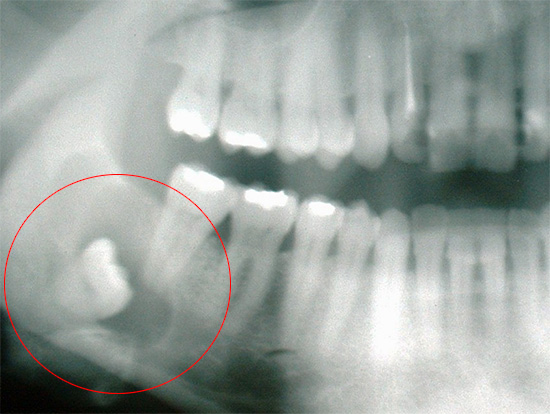
There are people who instead of turning to a surgeon for help,they simply suppress the pain with pain pills (Ketorol, Analgin, Tempalgin, etc.), but this is an unwise approach, since any inflammatory process in the eighth lower teeth (wisdom) is extremely dangerous. The danger lies in the fact that the spread of pus, and with it the bacterial infection, to the deep tissue of the jaw in such cases occurs extremely quickly.
First of all, individuals with a reduced immune system or a weak body reactivity to an infectious focus are affected. In deep cellular spaces there is an abundant blood supply, so the infection from them penetrates further, moving into the interfascial areas of the neck, up to the mediastinum. Against the background of an impaired immunity, the activity of pathogenic bacteria can eventually cause sepsis (blood infection) and death.
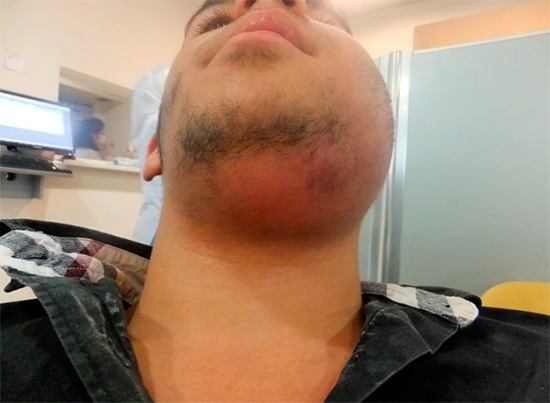
On a note
The program “Let them talk” dated July 18, 2011 with the scandalous theme “Tooth I Give” had three stories related to tragedies and dramas at the dental reception. The most terrible story was connected with the death of a girl from Kirov - from the wisdom tooth.
A young and healthy girl on the eve of the wedding got a wisdom tooth.Having endured the pain throughout the night, she turned to the nearest local clinic, where the surgeon realized the problem, how difficult the eruption was, and made a gum incision to “remove” thus interfering “hood” and help the tooth to get out. In this case, the doctor did not prescribe any medications, but he provided emergency assistance at the weekend, sending the girl for further examinations at the place of residence. There was no improvement from the treatment: the temperature rose, the gums swelling around the wisdom tooth increased, the pain increased, so the girl turned to a private clinic for help.
There, she was washed with a wound left by a past doctor after a hood excision operation, but again she was not prescribed medication. A day later, the girl again asked for help, but already in the clinic at the place of residence, where, except for washing the wound, nothing was done, and in the evening of that day she was hospitalized in Kirov hospital.
The next morning, death from intoxication. The conclusion about death is odontogenic sepsis (infection of the blood), that is, from a wisdom tooth that could not cut through. Based on the medical history, a criminal case was opened,but there were no successes in the year of her mother’s struggle with potentially guilty persons, except for dismissing the doctor from the clinic.
Why can gum ache?
When the lower wisdom tooth grows, the gum almost always begins to hurt. Upper wisdom teeth erupt more often without pain, but they often deviate towards her cheeks and, for this reason, can become a source of permanent trauma.
Thus, strong pain often indicates an inflammatory process under the so-called gingival hood - a soft tissue over the tooth that damages them.

In addition to pain, swelling of the gums and redness are noted. Over time, the formation of pus under the hood of the wisdom tooth occurs, the temperature may rise, often there is a headache, appetite decreases, the general state of health worsens, weakness appears. When swallowing, pain may arise from the side where the wisdom tooth grows, sometimes the throat, ear, and even the whole jaw hurt.
With an increase in the amount of pus in the area of inflammation, the opening of the mouth worsens, which sometimes does not allow the doctor to fully examine the corresponding part of the gum that caused such problems.The pain and other symptoms and signs associated with it allow the dentist to make a diagnosis - pericoronitis, or difficulty teething the wisdom tooth.
To decide what to do with a growing wisdom tooth, from which the gums hurt and which grows incorrectly in more than half of clinical cases, only a competent dentist can do.
Photos of wisdom teeth removed:
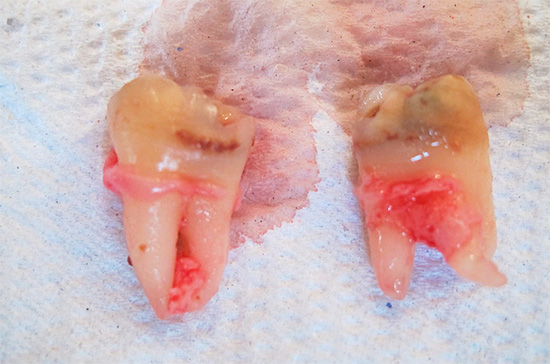
When teething wisdom teeth, they often simply do not have enough space: they can grow sideways, as well as toward the nearest neighbor. Generally speaking, the lower wisdom teeth are the most problematic, since when they erupt, one or two dental mounds appear, covered with gum, like a “hood,” under which, like in a dustbin, food is constantly stuffed and rots there.
At first, this is manifested by an unpleasant smell of rotting from the mouth and minor pains when chewing solid food. Soon, the pain in the gums increases, sometimes there are painful sensations in the cheek, adjacent teeth, jaw, throat, ear, headaches are provoked, high fever can rise.
The pain causes not only the feeling of "spreading", which creates a wisdom tooth in the gums, by analogy with the cutting milk teeth in children.There is a formation of purulent exudate (simply pus), which does not find a way out from under the gums and rushes into the surrounding tissues. It irritates and squeezes numerous nerve endings, causing severe pain not only in the causal wisdom tooth, but also radiating (giving) along the nerve branches to other organs and structures (cheek, ear, throat, etc.).
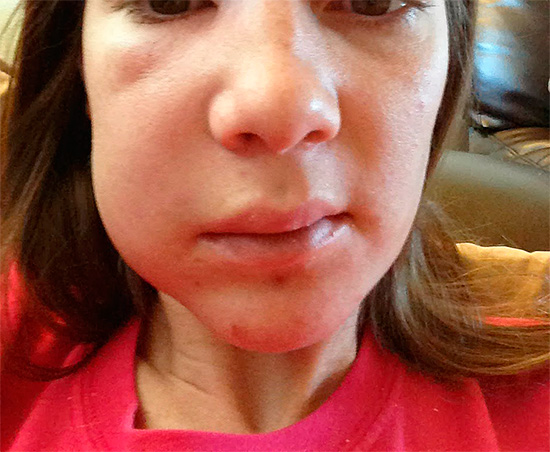
What are dangerous wisdom teeth?
The wisdom teeth that cause pericoronitis carry a potential hazard to a person’s health and life.
Pericoronitis is formed against the background of the activity of bacterial microflora, which under the gingival hood of the wisdom tooth is a favorable environment for vital activity and reproduction. In addition to the formation of purulent exudate under the gum, a mechanical trauma of the gum area swelling due to inflammation, which covers the wisdom tooth, often occurs, resulting in erosion and ulcers on its surface, worsening the condition of the surrounding tissues and provoking severe pain in the gums and cheek.
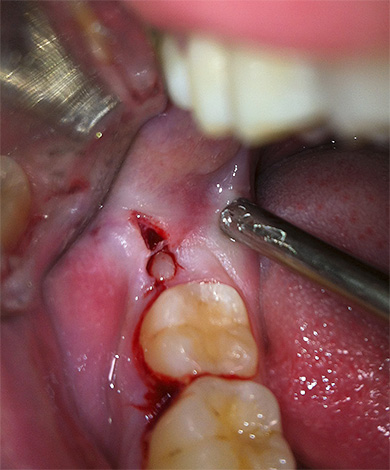
After a few days, purulent pericoronitis may occur, which is characterized by strong and persistent pain behind the “Seven” next to the wisdom tooth.There may be pain, which gives to the ear and temple, and is also felt when swallowing like a "dental sore throat." Against the background of local inflammation, the body temperature rises to about 37.5 degrees and the opening of the mouth is disturbed.
Submandibular lymph nodes grow and become painful with palpation. When pressing on the hood, pus is released - the cause of all the suffering. Against the background of the wisdom tooth, which is hard to penetrate, the redness and swelling of the adjacent tissues of the cheek, the palatine-tongue arch and the soft palate are visualized.
The acute phase of inflammation with high levels of immune protection and the breakthrough of pus in the oral cavity can turn into a sluggish chronic form, but after a certain time, an exacerbation usually occurs. Owing to a violation of the outflow of pus, a posterior-immoral periostitis with severe symptoms of intoxication may occur: an increase in body temperature to 38.5 with the inability to chew food against the background of difficulty opening the mouth.
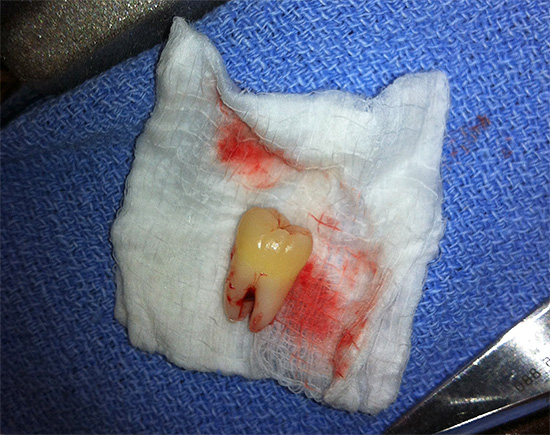
In such cases, the doctor observes in the patient the asymmetry of the face on the side where the wisdom tooth grows, as well as the paleness of the skin, enlarged and painful lymph nodes.The patient can hardly open the mouth on his own, so the doctor has to dilute his jaws.
It is important to know
With the further spread of purulent exudate, there are risks of developing cellulitis and sepsis, which leads to the spread of infection to vital organs with symptoms of severe intoxication, and this often leads to death.
The photo shows an example of phlegmon (acute diffuse purulent inflammation):
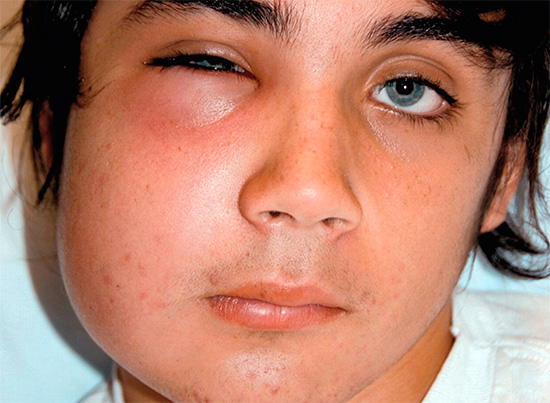
How to anesthetize a wisdom tooth at home: folk methods
Growing wisdom teeth (especially the lower ones) are insidious in that more than 60% of cases are located in the jaw incorrectly. Almost always the slope is oriented to the seventh tooth, which creates a lot of problems. First of all - it is pain.
Accordingly, when the cutting wisdom tooth starts to hurt, many try to solve the problem at home and just somehow anesthetize it. Here it is important to find a middle ground: none of the dentists would not mind if a person tries to reduce pain on his own, but do not forget that self-help should not turn into long-term treatment using “grandmother’s methods”.

Given the above warnings, let's consider quite suitable for use in practice popular approaches to solving problems.
- If the growing gingiva of the growing wisdom tooth, then you can take 2 tablespoons of sage herb and pour 0.5 liters of boiling water. Insist for an hour. After filtering, rinse your mouth with warm solution to reduce pain. Generally speaking, almost any kind of warm rinse helps a lot in such cases.
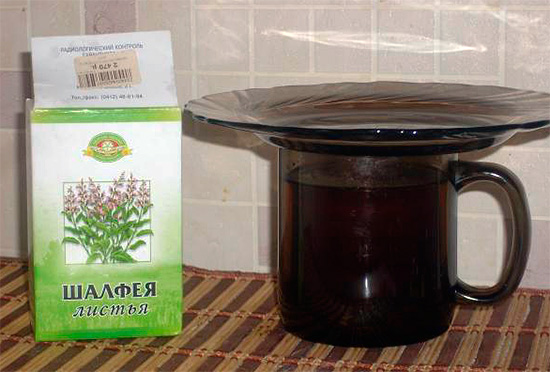
- If the upper or lower wisdom tooth hurts and the gum around it is inflamed, then you can use a decoction of oak bark for home treatment - it has antibacterial properties. It should take 6 tablespoons of bark, pour them with 0.5 liters of boiling water and put on a slow fire. After boiling, you can also add 4 tablespoons of sage herb and after cooling, rinse with warm broth about once an hour. Such a decoction relieves the pain quite well and to some extent antiseptic the oral cavity.

- According to another popular recipe, if a wisdom tooth really hurts, you can make a decoction of turnips. To do this, take 2-3 tablespoons of chopped turnip, add water and bring to a boil. Boil after this takes 15 minutes.Rinse your mouth with warm decoction should be as often as possible.
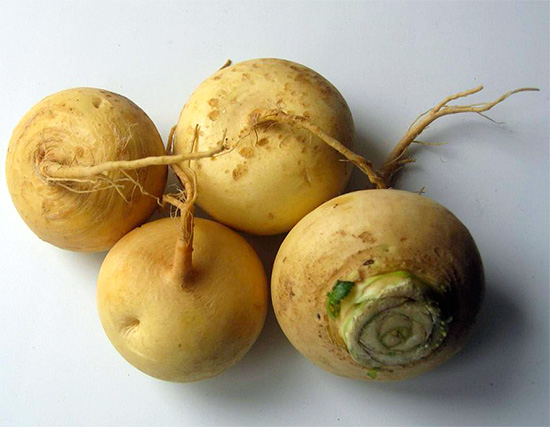
If the house does not have sage, oak or turnip bark, you can use the fact that there is always on hand: suitable ordinary baking soda and salt. One teaspoon of soda and salt should be dissolved in a glass of warm water and rinsed your mouth, the more often, the better - to a significant or complete relief of pain.
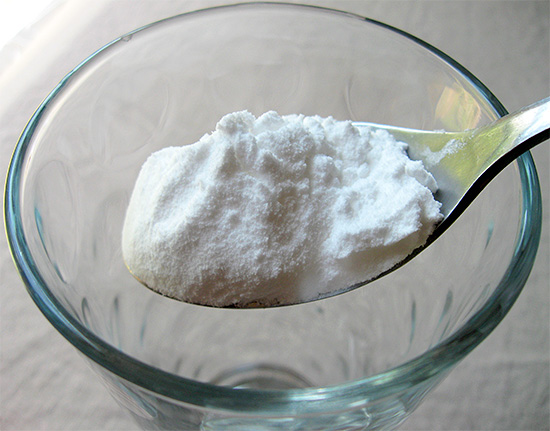
What to do with pains from a wisdom tooth, if the above options for any reason can not be implemented? Well, pain can be removed with the help of medications ...
Medical care at home for pain in the gums from the growing wisdom tooth
The effect of the use of painkillers (Ketans, Ketorol, Nurofen, Nise, etc.) is common and not very long - usually from 1-2 to 4-5 hours. There may be situations where pain pills do not work, and a person to get rid of pain in the gums over a wisdom tooth, cheek or jaw, increases the dose of drugs, drinking a handful of pills in a short period of time, which can sometimes lead to serious poisoning.
If the anesthetic tablet does not help, then you should not increase the dose, but it is better to simply change the anesthetic drug to an alternative one. Today, pharmacies have a very wide range of them.
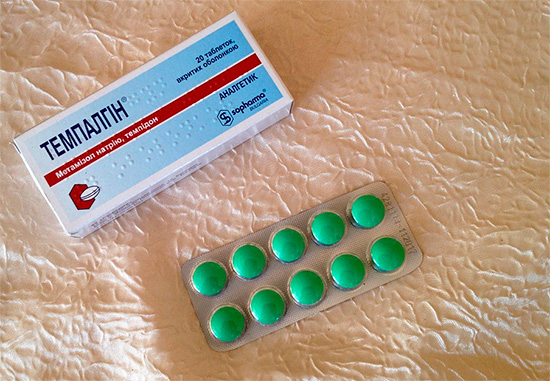
It is interesting
Maxillofacial surgeons are now resorting to the appointment of an expensive, compared with the usual painkillers pills, but long in its anesthetic and anti-inflammatory effect, the drug Etorikoksib. In the instructions for the drug there is no mention of dental problems, but he relieves maxillofacial pain perfectly. Moreover, its uniqueness is that it takes only 1 tablet per day, because its analgesic effect is stretched for 24 hours, which reduces the toxic effects of the drug and the load on the liver.
For topical use in order to reduce pain in the gums when teething the wisdom, antiseptic rinses are also used with weak solutions of chlorhexidine and Elyudril. Spray and solution "Angileks" is used for painful eruption of both milk teeth and "wise" teeth in adults.
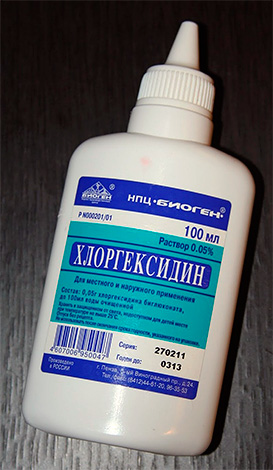
Gel "Kamistad" on the basis of anti-inflammatory, analgesic and antibacterial compounds reduces bacterial activity under the hood, and also anesthetizes the gum over the wisdom tooth.The preparation contains extract of chamomile flowers (antiseptic) and lidocaine hydrochloride (anesthetic) with the addition of an alcohol solution.
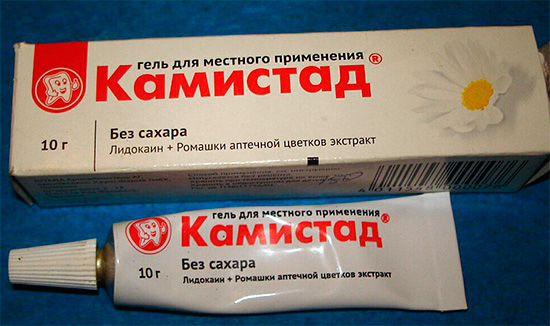
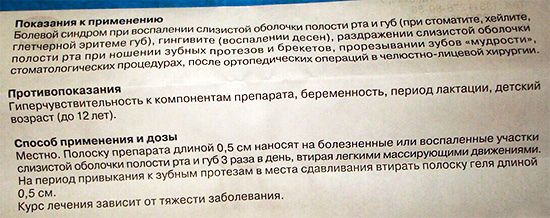
Surgical treatments for the wisdom tooth eruption
Wisdom teeth can begin to erupt at almost any age: at the age of 16 and after 40. The first sensible thought that an adult visits in moments of acute pain is to remove a sick “wise” tooth at all costs, since there is every reason consider it unnecessary for bite. However, in practice, after some time, fears arise before the removal operation, and a visit to the dental surgeon is eventually delayed, although the problem remains unsolved.
On a note
The fears arising in adults of the “old school” before the potentially complex manipulation of wisdom tooth extraction (especially the lower one) are justified, since the generation that grew up in the Soviet Union remembers well the techniques used for complex removal. A chisel and a hammer were used to divide the roots of the wisdom tooth when it was not properly erupted. The procedure was, to put it mildly, unpleasant, and in general, even very dangerous because of the risks of jaw cracks,head injuries when hammering off the hammer, and sometimes it lasted for hours as the wisdom tooth could have additional roots curved at a right angle due to the complex structure. Currently, chisel and hammer is used extremely rarely.
In the photo - wisdom tooth, removed in parts:
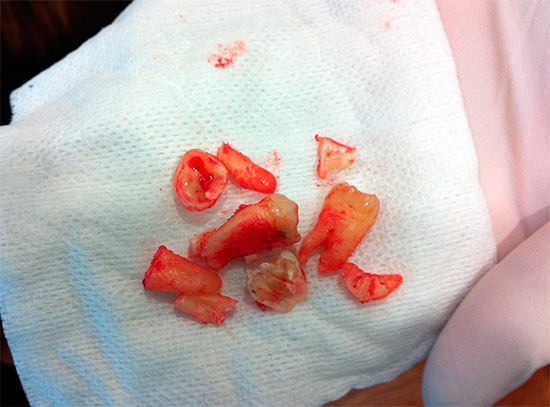
If a removal of upper wisdom teethAs a rule, it does not cause difficulties, even if they grow to the side, then the lower ones are almost always a headache for an inexperienced dentist-surgeon and a whole art for a professional. This point is worth explaining. The fact is that the main merit of any competent doctor is not how quickly he took a scalpel, cut his gums or with forceps (elevators) hooked and removed a complex wisdom tooth, pulled a gauze pad from above and gave a scared patient a good “kick in the ass” ( that is, politely said goodbye to him).
An important component of the professional approach is a complete diagnosis, monitoring the patient's health, preparation for surgery and comprehensive monitoring of the postoperative period.Few of the practicing doctors can boast that for each patient is an individual program for treatment, understands why he does something, and what prospects await a person after these actions.
Any difficulty in the eruption of a wisdom tooth with pain in the gums and surrounding tissues requires an x-ray. To determine the position of the tooth in the jaw (angle, structure, shape), an orthopantomogram (OPG) or a panoramic picture of all teeth on both jaws is used.
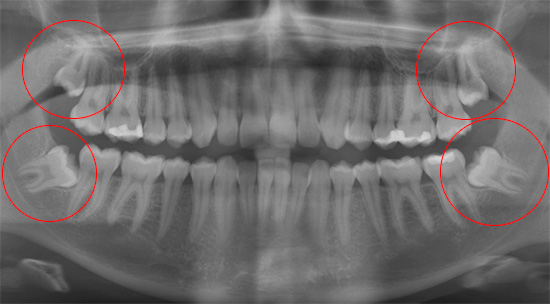
You can also make an aiming shot on a visiograph, a device that transmits an image to a computer monitor. After the dentist knows what he has to deal with, he plans the operation: he explains the risks to the patient, the approximate time of the procedure, the features of the postoperative period after the wisdom tooth is removed, etc.
Before the operation, health monitoring is carried out: anamnesis is collected (history of the present disease, comorbidities), a general blood test, biochemistry, determination of blood group and Rh factor according to indications, etc.
From the experience of the dentist
Diabetes mellitus identified in a patient before a tooth extraction operation requires mandatory individual correction of the upcoming manipulations.If diabetes mellitus is in the stage of decompensation, then it is impossible to remove the wisdom tooth in a planned manner, and in an emergency it is necessary to monitor the patient's health by an endocrinologist, and often in the hospital. Long lasting bleeding from the hole after removal of the problem tooth may be due to diabetes.
In some forms of diabetes, the hole does not heal well, so after removing the wisdom tooth and its roots from the hole, the dentist-surgeon should take the necessary measures. This disease requires special treatment of the patient, the correction of the underlying disease, so that the operation can take place without complications.
Let us return to the question of excision of the hood with a scalpel over the wisdom tooth to help it penetrate and relieve the pain from the inflammation of the soft tissues.
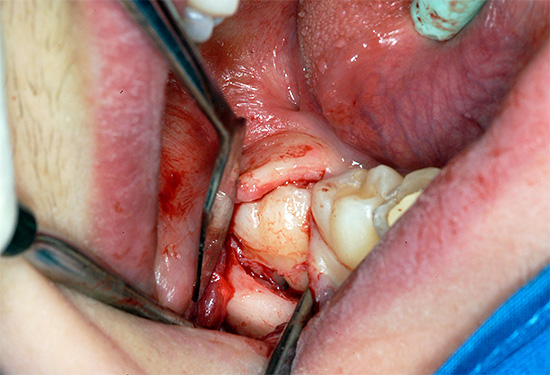
Most progressive dental surgeons, for whom surgery is not just a job, but a lifestyle and real art, do not recommend doing things that many years ago are still practiced in dental clinics and departments. Studies of this issue have led to disappointing conclusions: the risks of recurring pain in the gums, jaw, cheek,throat and ear from the wisdom tooth after the excision (cutting) of the hood over it is so high that they do not give doctors the right to take risks playing with the lives of unsuspecting patients.
In confirmation of the research results, many examples of cases (both sensational and little-known) can be cited, when excision with a scalpel of the gums above the wisdom tooth led only to deterioration of the purulent process with the development of serious complications, even to the death of a person. When there are 100% indications for removal, and dentists-surgeons ignore them in favor of the conveyor approach without a full assessment of the situation from the point of view of modern developments in medicine, diagnostics, and logic, then there are tragic cases.
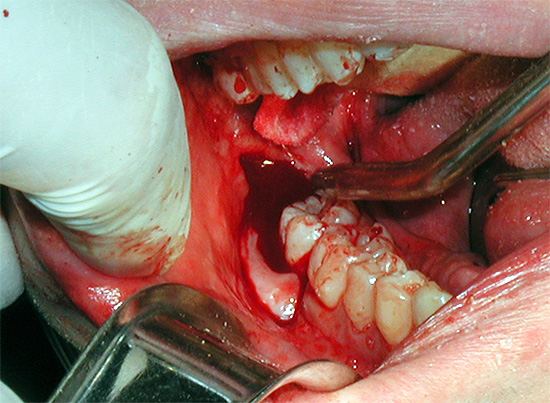
Dentist advice
It is possible to apply excision of the hood to relieve pain during pericoronitis only if it is not possible to remove a wisdom tooth for objective reasons, namely: there are no tools for complicated removal, insufficient equipment of the clinic or low qualification of a doctor. In other words, you can take risks when conditions for work are not created. However, a dentist driven into such conditions should measure the risks (including the head) of possible harm to the patient’s health and life.And whenever possible culturally refer patients to their colleagues for the complete removal of wisdom teeth with their problem growth with competent management of the postoperative period.
What other problems can you expect?
Pericoronitis, or obstructed wisdom tooth, is a serious illness that can also lead to bite problems. Few people know that, following the pain in the gums and the inflammation of the hood over the wisdom tooth, if it is not removed, there are often bite disorders: displacement of the dentition. That is why those who are faced with the difficulty of the wisdom tooth erupting for the first time are advised to consult not only the dental surgeon, but also the orthodontist (the doctor who deals with bite disorders).
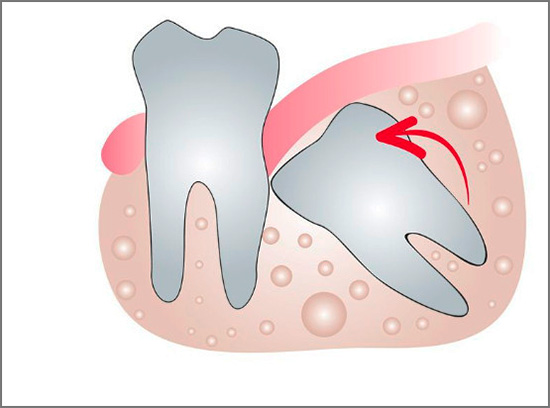
Often the lower wisdom teeth begin to cut and ache, but do not appear in a hurry to appear on the surface of the gum. In the pictures you can observe how the “wise” tooth is almost in horizontal inclination to the adjacent one, due to which, in a number of clinical cases, it also begins to provoke pain. Even in the wisdom tooth that has not yet appeared on the surface of the gum, caries and its complications can occur, as cariogenic bacteria easily go under the gum behind the penultimate "seven".
Wisdom teeth begin to hurt, not only because of problems during eruption, but also after a safe full or partial exit from under the gums. They almost never have an antagonist from the opposite side, they are too far in the jaw, often below the seventh tooth, and as a result of all this, their level of self-cleaning and hygiene leaves much to be desired. Therefore, caries develops on the wisdom tooth rather quickly, often with a lesion of the pulp chamber, accompanied by acute paroxysmal pain and long-lasting painful sensations from various stimuli (pulpitis).
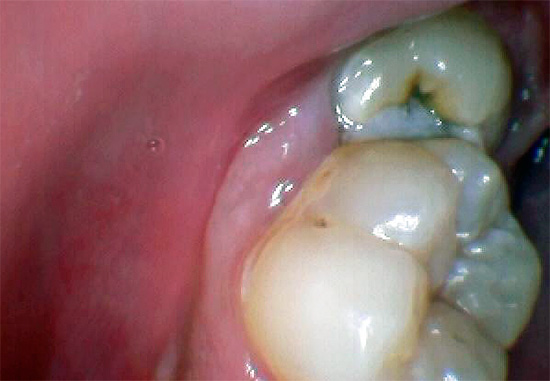
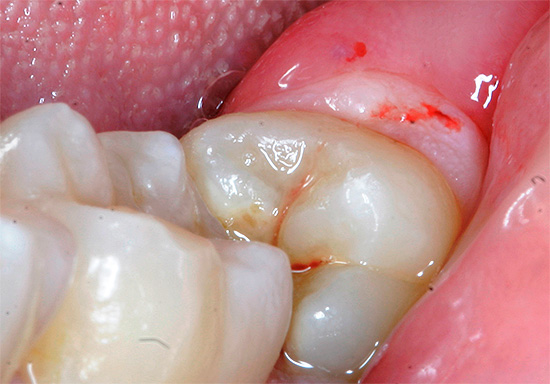
On a note
The role of preventive examinations in relation to predictions for wisdom teeth is difficult to overestimate. Competent orthodontist dentists know that already at the age of 15–18, using diagnostic pictures of teeth, we can tell for sure whether pericoronite will be done and what can be done now with wisdom teeth that obviously do not fit in the jaw or are turned towards the seventh tooth. Usually, an incompletely formed tooth is easier and faster to remove than one that has a shaped and extensive root network.Even the estimated difficult removal in a well-equipped clinic from a competent specialist takes no more than 10-15 minutes, and it happens - only 5 minutes.
Interesting video: wisdom tooth extraction (video taken with a dental microscope)
What is useful to know about teething wisdom

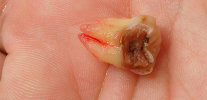
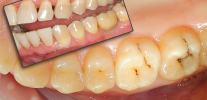

Thank you for the article!
Very useful article.Thank.
Thank. Helped to decide to go to the dentist.
People, go to the dentist! My sister suffered for several weeks, rinsed, anesthetic saw. Then she gave up and went to the doctor, and there, it turns out, the wisdom tooth was growing incorrectly, it was necessary to remove it. They pulled it out, in fact, it almost fell down, because it was painful there, and pus, it seemed, was. I brought her parodontotsid gel, smeared it on a marlechka and applied it to the damaged place on the gum - her doctor advised me to heal faster. But she banned rinsing in the early days, said that it was possible to do worse. In general, if the sister did not wait so long - everything would be easier and faster. And so much tormented. You shouldn't joke with wisdom teeth! Better to go to the doctor right away. You need to test yourself for strength!
Thank you for the article! Thanks to her, she decided to go to the dentist. Opened the hood, said it will bother - we will delete. Do not tolerate - go to the diagnosis!
Two teeth grow on both sides. From the right, the beginning of horror how to hurt, he almost got out! It grows correctly, up, is no different from previous ones. Beautiful, smooth.I think maybe you need to be patient until it crawls completely ?!
Hello, Lily! In this case, you have a difficult wisdom tooth eruption. Under the hood, which covered the back edge of the tooth, stuffed food and rot. This increases the inflammatory process and pain.
I strongly recommend that you visit a dentist who decides whether to wait, or it is better to take drastic measures right away. In this way, you will transfer the responsibility to the doctor who, after examining your tooth, will say: walk like this, or remove the tooth.
Without seeing your clinical situation, I cannot give you hope for prosperous patience and luck. Of course, most often even painful teething of wisdom teeth passes without complications and visits to the dentist itself, according to the principle: I suffered a couple of weeks - the tooth got out and ceased to cause concern. However, if severe symptoms appear: swelling of the cheek, difficulty opening the mouth, fever, severe intolerable pain, inability to chew, you should immediately consult a doctor.
Yes, I went through that. I was pregnant at 26 weeks.And here the wisdom tooth starts to bother - I went to the hospital, they pulled it out to me and that's it. The temperature in the hospital has risen, I cannot open my mouth, I cannot eat, I can not swallow it. Then swelling of the cheeks. They put in the WLH and had an operation.
Thanks for the article, after reading it, made sure that without a dentist in any way. Have experience wisdom tooth removal. On the other hand, after the removal, he experienced terrible pain in the gums at the site of the removal, but it's worth it! It is better to remove and endure than to endure the pain the next time.
Four months ago, an excision of the hood was done, since terribly sick lower 8 erupt tooth. All this time, nothing bothered, but yesterday there was pain again, the gums reddened and swollen. I have not yet gone to the dentist, but I cannot fully open my jaw. Probably, it's time to see a doctor. Furacilin rinse and iodinol.
If in nature it is, then for some reason it is needed. Nothing more does not happen. Even the appendix, as recently discovered, is not at all useless. And doctors say remove because it is a more expensive procedure than just excision of the gums.It is necessary to pretend on something.
Tell me what to do. The wisdom tooth hurts terribly, unbearably, and in our village there is no dentist.
Hello! If you want to hear something like me: “Speak with Baba Mani, who lives at the end of the village, or rinse with soda, salt, furatsilin, independently pull out a tooth, swallow a bunch of painkillers”, etc., then I can immediately grieve. Such tips can harm you, and if they help for a while, it will be until the next exacerbation, right up to the diffuse "flux" and the operating table. If there is no operating table in the village, then it is possible to “play in the box”. Hand on heart, Dmitri, I associate it with the well-known male question: “What to do, people: the car broke down in the field, there is no connection, there is no money, I cannot fix it myself, but for some reason the Internet is catching for now?”
Namely, thanks to small villages and villages where there are no doctors, the survival statistics for various medical problems are sad, BUT the most courageous and strong in spirit ask the blacksmith for a pile of thanks to remove a tooth under local anesthesia,and the smartest and most advanced go by a neighbor car or go 200-300 km on foot to the nearest stop to arrive at the district center or city where there is a dentist and remove a tooth, in order not to engage in its multi-stage treatment, but to protect itself from the complications of a problem tooth.
In principle, these wisdom teeth are most often removed according to objective indications, so that you will benefit in this from a medical point of view and geographically. I’ll say right away that there is no need to make an appointment for acute pain - emergency removal is done by many doctors. If there is a lot of money with money, then in the hospital and clinic almost always do this for free (or almost), but anesthesia is appropriate - according to the MHI. If you are confused by the distance to the doctor, then on the Internet you can find many people who, in order to save on dental care, arrange entire migrations over many hundreds of kilometers in order to receive quality assistance, and at low prices.
If you are sure that you are lucky with folk remedies, then this will be only on your conscience, since real medical care can only be provided by a specialized doctor, that is, in this context, by a dental surgeon.
Tell me, please, a week ago, made a hood excision, it became a little easier to open the mouth already, and the gum, it seems, does not hurt, but it does not even give to the temple, and the temple hurts even more than the gum. Is this normal or should I see a doctor?
Hello Irina! I'll start with my poem:
From the lower teeth the pain is directed into the ear,
In the back of the head, in the temple, in the upper tooth gives,
From the top - "to the bottom" - this is unlucky:
And in the cheekbones, in the "eyebrow" - so does not sleep!
Of course, that the features of the irradiation of pain is not always amenable to this formula, but often. Why I said that it is not always: it is regarding the difficulty of the wisdom tooth erupting (the lower one was “treated” to you), which creates sensations that the entire jaw, ear, throat, head, etc. hurts in unison with the gum around the tooth.
I think that just in case, it is worth referring to a dentist in view of a possible coincidence: what if there is a carious upper tooth opposite a wisdom tooth? In general, I am not a supporter of excision of hoods, since it is necessary to bear in mind the risks of its possible re-growth over a certain period of time (from several months to several years). I repeat that this does not happen often, but there is a risk.
Thanks for the answer) But what measures then to take, if not excise? Pull a tooth out?
Hello Irina! It is best to remove a problematic wisdom tooth, especially one that penetrates outside the dentition. And the details you wrote, apparently, my colleague, Yuri. Look at the bottom comments: there Yuri writes about problematic wisdom teeth, the hood of which many times "cut to no avail". However, it is worth remembering that a number of dentists regard the removal of wisdom teeth as a source of income, making unnecessary surcharge. So look for honest doctors.
Thank! A couple of problematic wisdom teeth at one time removed, it became much easier without them, and even the hood was notched several times. Now, here again, on the other side, a new one is already going on, wide, although it is going smoothly, but it is low and it is as if it is pressing on neighboring ones, and the gum is aching behind the back wall. Once again I do not want to incise, I will ask you to remove immediately !. And the distorted and displaced adjacent teeth, I feel, will cause. This is a sign of “atavism” from ape-like ancestors, the poet’s wisdom teeth — they are so superfluous. Chewing function is not created.And let the dentists correct, in my opinion, even when installing braces. Competent experts advise to remove all 4 wisdom teeth so that there is no jaw asymmetry afterwards!
Six months ago, a wisdom tooth began to break through and the gum ached. I went to the doctor. Incised the hood. Now the tooth began to grow, and the gum again became inflamed and the cheek swelled. Should I go to the doctor, or the tooth grows and the pain goes away?
Hello! Modern protocols and recommendations "direct" such cases to the mandatory removal of a wisdom tooth. In most cases, it is not even advised to trim the hood for the first time, as this is fraught with risks. In this context, you confirm with your clinical case that it is more expedient to immediately carry out the removal of wisdom teeth during pericoronitis - difficult eruption, rather than plasty the hood over an 8 tooth.
If you are ready to risk your health and wait for the weather by the sea, then you can not go to the doctor. Otherwise - it is.
A wisdom tooth comes out, it hurts terribly, I feel sore throat, it is very painful to swallow on the part of a sick tooth, the mouth opens, but with pain. Very afraid to dissect the hood.Tell me what to do to prevent severe inflammation, so that, God forbid, pus does not appear?
Hello! The most reliable way to help in this situation today is to remove a tooth with such a diagnosis. Pericoronitis, or obstructed wisdom tooth, is a treacherous disease. Indeed, you are right that "pus" may appear.
The excision of the hood is still carried out by many dental surgeons. This is only at your own risk. Current trends do not give me the right to recommend the latter to you because of possible complications, even if the percentage of such cases is minimal. Fatal cases due to useless and repeated excisions of the hood instead of a complete wisdom tooth removal have already been recorded. It all depends on many factors, but the risk must be justified.
I can not say that only a competent specialist who has specialized in this field for a long time and has a good base can remove such a wisdom tooth with minimal consequences. "Consequences" - you ask me? Of course, this is an operation to remove a wisdom tooth. Albeit often carried out under local anesthesia.As far as I know, the operation to excise the hood, at least, does not provide instant relief. The inflammatory process on the background of the injury may bother about 2-3 days, and it is severe. Also, do not forget that, removing only the hood, you do not deprive yourself of the risk of possible complications, since no one knows if the work can be done with a scalpel alone.
The decision to make all the same to you, and it is necessary to address to the professional maxillofacial surgeon.
Hello, faced the same problem, the lower part of the jaw hurts. I went to the local clinic today, got an injection: first Novocain, and then some antibiotic. Then he decided to check whether he did the right thing or not. In general, the second day I can’t normally open my mouth and chew food, my throat hurts a little! What can you advise? Thank you in advance.
Hello! Unfortunately, in order to analyze the situation, there is not enough information: what was done with the tooth, was there a reason for gums, why was an antibiotic injected, etc.? In general, Novocain for anesthesia is almost never used. I would not advise you to re-apply for an appointment where this drug is used for anesthesia.In general, I ask you for specifics on this issue, then certain answers will be outlined.
Wisdom teeth grow 8 sideways without pain, but on the other hand I suffer for a week, it hurts, I have no strength ((The tooth was cut a little in half a year and that’s all ... I went to the dentist, said physiotherapy for a week (I didn’t, it wasn’t possible).) hood! We are planning a weekend, but I can’t take it anymore ... They don’t take it without recording ... My jaw hurts and I get the feeling that the whole side of my teeth hurts, some of my face is on fire! Advise me what to do?
Hello! I think that self-medication involves many risks, and pain relief will bring only temporary well-being. I am sure that in your city there is a round-the-clock dentistry (private or state), which can provide emergency assistance.
Knowing your situation according to the description, I can assume that it will be risky for you to excise the hood. That is, you risk to “send” the infection through the maxillofacial region inland. Modern dentists-surgeons with difficulty teething (especially with the tendency of the tooth to grow crooked) of the wisdom tooth are strongly advised not to carry out the excision of the hood, but to immediately remove the obviously problematic tooth.I believe that this is quite natural and will immediately save you from future problems.
I want to warn you in advance that comfort will not come immediately after the removal of a wisdom tooth: there may be pain in the first days after removal and even a slight swelling. However, almost always after the excision of the hood, the same thing happens + there are risks that the wisdom tooth will give many problems in the form of complications (there are also cases with a fatal outcome).
Thank you for such an interesting article, it helped me a lot, and figured out the symptoms. And I can not understand what's the matter. Thought, chill, or cold drink, now it is clear what was the matter. And the video is excellent, now I will know how the removal process takes place. Oh, wait for me, the dentist, didn’t go to him for a long time.
THANK YOU VERY MUCH. I can't really speak, my throat is swollen. The doctor says: "Until the end did not get out, be patient." Medicines can not be drunk, I feed the baby with breast milk. Soda and salt help to reduce pain for 15 minutes, I will try your other tips. Thanks for the article.
The wisdom tooth was removed, the removal was difficult, all wisdom teeth cannot erupt. Gums were sutured, stitches were removed for 10 days.Today, 2 weeks have passed since the operation, and the smell from my mouth worries me. Although I do baths of chlohexidine, the smell remains (On the day of the removal of stitches, the doctor washed the wound and said that everything heals well) But what about the smell from the mouth? Do I have any inflammation? I'm afraid of complications after all I ((
Hello! I assume that the wound is still a source of food delays. I recommend that you contact an independent dental expert for a consultation at the clinic to find the cause: it is not enough just to have oral information, and it is important to conduct a detailed examination in the oral cavity. Perhaps there are carious lesions on the teeth, the wound itself is filled with food debris, orthopedic structures in the mouth have become unusable, etc.
I sit and cry. Because there is no more strength. It all started with the fact that the mouth stopped opening. I turned to private dentistry, without examination I was diagnosed with inflammation of the temporomandibular joint, voltaren tablets were prescribed, a warming ointment, compresses. He was treated for a week in this way, the pain began, there is still no way.Turned into dentistry at the place of residence. An x-ray was done, but of poor quality, in the picture 2 wisdom teeth, and no joint is visible. We continued the same treatment by adding UHF therapy and amoxicillin. The pains became unbearable, the painkillers - Ketorol, papaverine, prednisone, analgin - relieved pain for 2 hours. Hurt so another week. There was a question about the closure of the hospital. We decided to send it to the region, but first go to another dentistry. They took a picture on the visiograph, saw 2 teeth on the left, above and below, could not figure out which one was to blame. Forcibly opened his mouth with a spatula, but not enough, then made 3 injections. The hood was cut from above and below. All this was accompanied by such pain that it is easier to give birth 10 times. Ceftriaxone was prescribed to prick 2 times. And that's all. 2 days have passed. The pain is still unbearable. The mouth does not open at all. Everything hurts: jaw, ear, throat, temple. I constantly rinse my mouth with chlorhexidine, soda, salt, smear the gums with holisal, no pain reliever acts. The day after tomorrow will close the hospital. If I live. Please help, tell me what to do next? I ask you to.
Hello! The fact that you "nadsekli" hood - this is a vicious practice. Most practicing maxillofacial surgeons are against this technique and strongly recommend the removal of wisdom teeth. Especially with difficult eruption of the lower eighth teeth. I think that you should urgently remove problematic wise teeth, if any, since you are at great risk to your health.
As for anesthesia: I recommend running without thinking about dentistry, where they make it so that "giving birth 10 times easier." To hurt a person in the dentistry of our time is utterly unprofessional. In case of difficulty opening the mouth, there are techniques for external anesthesia (or) for relieving muscle spasm for anesthesia in the mouth after it opens normally.
The left lower eight is penetrating. Half a year ago, the hood was cut out, they were told that they could not be removed, because grows smoothly and does not interfere with other teeth. Recently I started to grow again - my gum was swollen, my throat was sore from the same side - it seemed to draw a little pus from under the swelling on my gum.I smear cholisal, rinse with chlorhexidine and use ketorol for pain relief. Do I do everything correctly, or is it necessary to remove a tooth?
Hello! I think that you are risking your health, although more often you are lucky than having serious consequences. You by your example prove the correctness of the recommendations of practicing maxillofacial surgeons for the removal of a wisdom tooth when it is difficult to penetrate without cutting the hood. That is, excision of the hood is considered only a temporary measure, although for some patients this treatment is quite suitable. But how to guess if this vicious practice will be good for you?
It seems to me that you have fallen into the category of patients who need to extract a tooth for all 150%.
I have a problem, on the right side of the 8-ka almost (there is a little left) has grown, but on the left side of the bottom he started to hurt. Moreover, it is growing quite normally, without deviations, as well as on the right, but it still hurts. It also hurts the gum itself near the tooth, I can not chew it, when closing the jaw on the tooth, the gum starts to hurt. But I can calmly open my mouth, my throat does not hurt. What to do?
Hello! I can voice one definite answer and several alternative ones. Definitely - this is to contact a dentist-surgeon (or maxillofacial surgeon) to check the tooth for a serious inflammatory process. In absentia, I can assume anything, but the opinion of an experienced specialist often avoids a lot of problems.
As for your situation: while the wisdom tooth cannot erupt through the “hood”, it is a hostage to this problem: when chewing, the gum is constantly damaged and scarred. As long as your initial stage of pericoronitis (obstructed dentition) does not cause concern. This may be a catarrhal form, that is, without purulent contents under the hood and without the characteristic bright symptoms of purulent inflammation. If the food starts to actively fall under the hood and rot there, then it's not an hour, problems will arise. Better to do everything as it should be.
And now about how it should be. Opinions are divided here: some doctors suggest monitoring the situation, but limit only to home-based treatments and examinations once every two or so days.More categorical consider that a problem wise tooth should be removed, since there is no room for it, and the hood is a time bomb, the source of a violation of hygiene and comfort of life. The latter category of doctors (and there are also a lot of them) believe that it is possible to simply excise the hood, and the tooth will erupt itself within a few days or weeks, and there will be no trouble. However, opponents of this method have repeatedly encountered the fact that after such excisions, some people repeated everything again or it became worse.
I think that I explained the situation on this topic, but you still have to choose. Health!
When a tooth is cut, Solcoseryl paste helps very well in pain. And if the tooth is removed, then it is possible to smear the hole with it, so that it does not hurt (if it wasn’t only stitched).
Wow, so much attention here! I read everything, thank you very much for the information)
Just recently I started to cut this wisdom tooth! At the same time, it was wrong, even cheeks were scratched. And then also the gum ached. As a result, it was not so much that everything hurt, how much it hurt and irritated! I turned to a familiar dentist, to which he advised me to take Grammidin, which would just relieve this pain.I obeyed him and eventually began to dissolve the pills, and thanks to them it became easier, it turns out, they relieve the pain. As a result, the tooth continues to grow slowly, but grammidine made this process softer)
I am 11 years old, the tooth seems to have started to go down the gums, and the gums are slightly swollen, but are not visible on the outer cheek. The gum on the lower jaw of the last row hurts. 5 days ago I started to hurt and now, when I touched the tooth, a small part of the tooth fell off and was soft. What to do? Tell me please?!
Hello! I dare to assume that you have decay of the wall (s) of the last tooth by caries, probably the 6th, since the 7th teeth usually erupt at 13-14 years. The gums, accordingly, are trying to take a place (emptiness) in the carious tooth, since nature does not tolerate emptiness, and the tooth will not give strong pain today or tomorrow. That is why it is important to promptly consult a dentist for the treatment of a tooth, so that later you don’t have to remove only the roots. Thanks for asking.
Hello! I read everything, and according to the symptom I still have, the pain is just unbearable. So there is also a floor of the tongue and the lymph nodes are sore and inflamed.Went to the dentist, the doctor said to wait until the tooth is cut, and rinse soda! How to be I do not know, the pain is unbearable, gives to the upper part, too. Tell me, please, what to do? Thank.
Hello! There is everyday logic and professional. Moreover, a number of dentists clearly suffer from bouts of everyday logic, but only until the first serious event. I mean that during difficult eruption of the lower wisdom tooth there are a lot of unpleasant moments, but often this is accompanied by the production of pus under the hood that covers this very tooth. Whether rinsing with soda (or some other folk remedy), using ointments, gels, solutions — all fall under the category of “Russian roulette,” although, judging by the practice of many dentists with everyday logic, there are many more happy cases than with a miserable end.
A person has immunity, and his help is not always unlimited, moreover - stress, other diseases in the body, hypothermia, overheating, etc. can be imposed. Deaths from neglected pericoronitis are and will be,as long as there is a cohort of dentists with a slight look at this problem (that is, they are waiting - perhaps, it will erupt normally and everything will resolve itself). Personally, I am sure that there is a golden mean. This is when, after examining the patient, you can immediately understand: immediately remove the “floating” tooth in the pus (maybe even in the hospital of maxillofacial surgery), or (with a slight marginal gingival inflammation) wait 1-2 days, but taking into account the competent recommendations and attendance every day for inspections. Ideally, the problem with each day should not provoke increased pain with severe signs of inflammation (swelling, high fever, inability to open your mouth, etc.).
Regarding the possibility to excise the hood over the wisdom tooth and enjoy teething for a certain time (1-2 weeks): in principle, many doctors practice this kind of help, and almost always it is successful, but often distant. After the excision of the hood, almost every first person has to suffer several days with the same unbearable pain. But this is taking into account the fact that it was not before the incision of the beginning purulent complication, which goes deep into the jaw spaces, because otherwise there will be trouble.In general, it is 100% accurate to guess whether a person is more likely that a simple cutting of the gum will help in a particular clinical situation, taking into account also whether the tooth is properly oriented for eruption (maybe it lies sideways, or rests on root of 7 teeth), no dentist will be able, even with great experience.
That is why a large group of dentists-surgeons all over the world prefer to solve this problem in a big way categorically (professionally): to remove a tooth in case of difficulty teething and, thereby, to precisely help the patient. A large number of doctors with everyday logic and patients who say something like will disagree with me: “I was told to remove a wisdom tooth with a hood, but I suffered for a couple of weeks, it festered, it festered and it came out through the gum, now you can live, the tooth is in place. "
As they say, to each his own, but it is worth remembering the deaths when running pericoronitis and adequately assess the risks.
Hello! A month ago, suddenly and so inappropriately (at work and 3 days before the wedding), a wisdom tooth began to be cut, located in the lower part of the jaw.There was pain, which a couple of hours later became terribly unbearable. It gave to the temple, and the entire right side of the face (where the tooth itself is) simply ached as hell. Took what was at hand - analgin. After 6 hours the pain subsided. The next day she went to the dentist. Take a picture. Inspected. It grows exactly in the picture, the adjacent tooth does not support. Ketorol or Ketans have been prescribed for pain. Anti-inflammatory drug (which I usually take for allergies). Rinse your mouth with soda. After that day, the next time he fell ill only a week later, but not so acutely. And then a week and a half there was no pain. Then pain again. And so with a frequency of 5-10 days hurts for 2-3 hours. All that worries me is pain. It cuts and itches. I can not sleep. Painkillers do not help. At least, she took Ketorol first - it did not help. Half an hour literally, and the pain was returning. And since the instructions can only be taken at intervals of 4 hours, I had to endure. You will laugh ... But water helps me for a short time to relieve pain. Just get some water in my mouth and sit. I do not know what to do. Again go to the doctor and complain of pain? Tolerate until it cuts through? And how long does a wisdom tooth erupt? What would you advise to do?
Hello! Just in case, I would like to draw your attention to a possible nuance: what you are describing is very similar to the symptoms of pulpitis or periodontitis of a tooth (not the wisdom tooth that is just erupting). Especially clearly it says that the water, while it is cool, relieves pain. In principle, you didn’t describe the classical development of the clinic for difficulty in wisdom tooth eruption: pain when swallowing, pain in the throat, difficulty opening the mouth, pain in the gum over the wisdom tooth when chewing, etc. It may make sense to look for hidden carious cavities on the lower 6 and 7 teeth, since at first the symptoms of radiating pain in the temple on the right side indicate, according to the observations of the researchers, the lower tooth. Especially since you say "the wisdom tooth is growing smoothly." Perhaps this wisdom tooth has nothing to do with it.
Hello! A year ago, I began to cut a wisdom tooth. I went to the dentist, I made an incision, the tooth was cut. And now, a year has passed, nothing is bothering, but now, a year later, he began to hurt from the other side - he was cut in half. If I get injured again and won't bother anything, do I still need to delete them? Please advise.
Hello! The question is not so simple. Many maxillofacial surgeons believe that wisdom teeth bring nothing but problems in the future. However, there is such a thing as functioning wisdom teeth that help a person to chew food normally. Another important point is that they are often used as a support for prosthetics, when it is important to put, for example, a bridge. Therefore, many orthopedic dentists also hope for the presence of a normal terminal tooth. However, according to statistics, girls often have little space due to the miniature jaw, so that these wisdom teeth can take their normal position. Therefore, they often erupt to the side, bite the buccal mucosa, or generally cannot erupt, as they rest against the roots of the adjacent 7th tooth with their crown part.
Since you mentioned that one of the lower wisdom teeth successfully found a place in the jaw, it is difficult for me to say anything. Naturally, his “behavior” may differ from the symmetric eighth, which, for example, can rest on a nearby tooth and become a problem for the future.That is why without an assessment of the condition of the tooth on the radiograph can not accurately judge the current situation. Moreover, the method of incision of the gingival hood is controversial from the point of view of most oral and maxillofacial surgeons, despite its frequent successes.
Bottom line: you need an individual assessment of the wisdom tooth in the dentist’s chair, after which you will decide whether to risk your health for the long term, and whether it is advisable to save the tooth at all.
Hello! 3 days ago a wisdom tooth ached, on the right to the lower jaw. I can not open my mouth, sore throat on the right. He was at the dentist, because the mouth could not open completely. After examining it, the doctor prescribed me dexalgin (25 mg), ampicillin (capsules), and loroben (gargle), saying that in a couple of days it would be time for the mouth to open for the picture. I can not chew and sleep normally. Tell me, please, is it possible to somehow open your mouth under any preparation for further examination? And is it possible to remove a tooth, even if it grows correctly? I am 39 years old. Tell me please. Thanks in advance. Thank!
Hello! Personally, I think that in case of difficulty opening the mouth due to the wisdom tooth, the latter should be urgently removed, and local “poultices” can even be harmful, since precious time will be lost. More than confident that anesthesia will be possible to remove the tooth. If it is even difficult to open the mouth, in oral surgery of regional dentistry, at the university or in a large dental center, oral methods of anesthesia are used, as well as techniques that allow the introduction of the necessary drugs to improve mouth opening without forcing the jaws. Therefore, answering your question: in your case, the wisdom tooth, even if it grows correctly, is more likely to be removed rather than not removed. This conclusion is based on your description, the rest - in fact after a medical examination. It is better to have the opinion of a reputable maxillofacial surgeon, and sometimes even the opinions of 2-3 doctors (but after careful examination in the chair, which is important).
Tell me, please, the wisdom tooth climbs, it hurts for about the second day.Chewing food hurts, open mouth hurts, gums do not bleed. On the site of a crawling tooth, the back wall is white - as I understand it, the gums die. The tooth is not visible as it grows, but even the upper jaw itself hurts before the beetles. It’s not even painful, but itchy.
Hello! I suppose pericoronitis is difficulty in the eruption of the wisdom tooth. A mandatory consultation of a dentist-surgeon is necessary, since:
1. The tooth may erupt with a slope in the direction of the 7 tooth (this situation is very undesirable);
2. Sometimes this process becomes purulent, which is not always manifested by acute symptoms, but leads to the spread of edema and intoxication of the body. That is why to calm down and immediately say something like: “Do not worry, a tooth will appear from the gums, everything will pass by itself” - I, by virtue of my knowledge of this topic from practice, have no right. Without examining the oral cavity and analyzing the image (the direction of the tooth and the orientation of its roots in the jaw space), it makes no sense to assert something positive or negative, and even more so - to prescribe home treatment methods. Thanks for asking.
Hello, the second day hurts, I can not open my mouth.Upper left tooth crawled out, but not completely. A little swelling cheek. Now it is painful to swallow. At the reception after 3 days. Tell me, what can temporarily numb?
Hello! The situation is atypical: usually these symptoms are caused by the eruption of the lower wisdom tooth. However, it’s definitely not worth delaying your visit to the dentist.
As for anesthesia - specific drugs in absentia via the Internet are not prescribed. But the advice of doctors about this revolves around painkillers and local gels, like those that are prescribed when teething baby teeth. Sometimes antiseptic rinses help, but all this is extremely short, often only for 1-2 hours. It is important to quickly eliminate the cause of the problem.
Good morning! Three days ago, a wisdom tooth was removed from the left of the lower jaw. After the X-ray, he was sawed off from the jaw, as he had grown into it. The doctor inserted a rubber piece into the hole and told to chew on the other side.
Appointed for inspection after 6 days. Three days have already passed, the pain does not go away, I accept Nekst, after the meal I spray Miramistin.I feel an unpleasant taste in the area of removal. What can you advise for more rapid passage of aching pain, or only time will help me? I accept an antibiotic too. Thank you in advance for your response.
Hello! After such complex removal, severe pains can last up to 4-5 days, and the symptoms depend on the level of injury of the operation: the more the tissues are damaged, the longer the initial healing phase will be. Especially often the pain increases because of the open edges of the bone and in general with the "open" hole. The fact that you have been given drainage (gum) suggests that there may have been a purulent process, or the doctor simply wants to be safe from complications. An unpleasant taste is associated with drugs placed in the well or on top of it to accelerate healing and prevent alveolitis.
The fact that you regularly carry out a doctor's appointment is great, as well as the fact that the dentist is ready to control your situation, having appointed him 6 days after removal to the reception. For pain relief in addition to painkillers, I can advise anti-inflammatory,enveloping and accelerating wound healing gels and ointments, but it is better to consult the physician on a personal appointment about the advisability of using a specific agent.
Hello. I got a wisdom tooth - in the place where the molar tooth fell out. The pain does not bother, but small ulcers came out near him, as I bite a part of my cheek while eating. Need to urgently go to the doctor? Or can it be healed with antiseptics?
Hello! Normally, a wisdom tooth erupts at the end of the dentition, that is, it is located behind the seventh permanent tooth. But in rare cases, it can really erupt almost at the site of the previously removed seventh tooth.
When biting the mucous with the wisdom tooth, it is desirable to remove it, since chronic ulcers do not lead to good. Not only are they simply painful, so there is also the risk of developing them into malignant tumors. You should contact your doctor urgently, as it is best to promptly eliminate the cause of the problem. Antiseptics - a temporary and useless idea: until the next decent bite.In some cases, you can grind the bumps of the wisdom tooth, but this is not a very effective measure - the practitioner must determine its appropriateness by the situation.
Hello. I am 13 years old and my wisdom tooth is growing (on the right side). The hood was formed, at first it was elastic, it was very sick, but now it is soft - it hurts less. I went to the dentist. He said that the tooth develops normally, if it is very painful, then it can be cut out. And now, it seems to me, it does not hurt, but suddenly ... What do you think, to go for an operation or to wait?
Hello! I recommend at the stage of the eruption of the wisdom tooth, nevertheless, after some time, once again consult with your doctor, that is, undergo a check-up examination. If everything is in order, then we can continue to monitor its safe eruption. It would be nice to have a snapshot of the wisdom tooth, so that there is an idea of its direction. Sometimes it happens that it grows to the side, and the absence of pain and other symptoms is only temporary well-being. Therefore, diagnostics is so important. So the probability of the operation depends on the results of the diagnosis. Thanks for asking.
Well, in general, I went to see what to anoint or pokapat on the gum, and here such tin. I will go, probably an ambulance. Internet damn ...
Hello! A month ago, a tooth got very sore and the cheek was swollen ... I went to the hospital and was told that a wisdom tooth was growing. They made an incision, pumped out pus. It seems to have passed. A month later, her cheek started to swell up again, pus appeared. I try not to drink pain pills, because is pregnant. What to do? Can I do something at home?
Hello! Immediately run to the dentist-surgeon (and better - in the maxillofacial surgery) to remove the wisdom tooth. If this “half-measure” (excision of the gum hood over the wisdom tooth) does not help, then in almost 100% of cases it is worth urgently to remove the tooth, since it can cause the rapid spread of purulent inflammation (and even death, as sometimes happens). My words are not empty patient intimidation. What you describe is serious, believe my work experience and awareness. Once you have tried this procedure, it did not help.Once again, everything can go less well. For example, may begin phlegmon of the submandibular region. So immediately to the doctor!
Hello! I have such a situation: on the one hand, a wisdom tooth has half crawled out, the remaining half is under the so-called hood. Got out exactly, nothing rests. Throughout the year, I regularly followed this tooth, every day I carefully cleaned the area of the hood with an irrigator. The last two days there was a strong aching pain, no swelling is noticeable, but the gum over this tooth is very sore and gives all over the right side of the face. What would you advise in this case - just remove the hood, or will have to remove the entire tooth? ((
Hello! The situation is ambiguous. First of all, you are already focusing on the fact that you took care of a wisdom tooth for a year, so that, God forbid, it should not be removed prematurely. That is, you definitely want to keep it for many years after the full eruption. On the other hand, if there are problems, does it really ideally erupt perfectly? Maybe it is under a certain inclination to the adjacent tooth, which makes it difficult for its normal movement?
Be that as it may, snapshots of this tooth should be analyzed, purulent edema risks determined after examination in the oral cavity, and only then a diagnosis is made and the doctor expresses his opinion. If the doctor advises to remove the tooth, and you do not want to (despite the attendant risks), then you have the right not to remove or sign the consent to this medical intervention.
As for the “trimming” of the same hood: this technique is practiced in many dentistry at various levels, although not all specialists welcome it because the result is not always positive, and the risks to the patient's health remain. Again, this procedure will help or not, depends first on the position and direction of the tooth, and then on the reactivity of the organism and its possibilities of compensation. If something goes wrong, then patients strongly regret not having removed it right away. So the decision is made on your question only with pictures, only in the dentist’s chair, and only with your consent after the pros and cons are weighed.
Good day. Began to cut through the bottom right wisdom tooth. Previously, the pain was periodic, now it has become sick more often.It can be seen that the tooth climbs far enough away from the latter. Should I go to the doctor, or wait until he gets out?
Hello! It is best to contact a dental surgeon to assess the condition of the tooth, including the image. This is done in order to understand the direction of tooth growth (orientation in the jaw) and the general condition. If the tooth, roughly speaking, is cut through “crookedly”, especially in the direction of the adjacent seven, then it is better to remove such a wisdom tooth in order not to risk health. It is also advisable to remove those wisdom teeth that are directed to the side of the cheek - sideways. This is done to avoid further permanent trauma to the cheek, and the tooth can be extremely problematic to erupt, even to the infection process.
Previously, those wisdom teeth that caused swelling of the gums and severe pains (pericoronitis) were simply cut off by the “hood”, but now many doctors are not at risk to carry out this procedure, but prefer to remove it immediately. Here, the approach is exclusively individual, and therefore you need to go to the doctor, and there they will already assess: is it worth waiting for the tooth to “crawl out”, or is there already a danger of suppuration or a violation of eruption (which means an urgent removal).
Hello.Tell me, please, how it would be better: if a tooth aches badly, cut the hood while the wisdom tooth grows or does it remove the tooth? The pains are simply unbearable ... Severe headaches, the jaw hurts badly and you don’t open your mouth, and there is no appetite. His cheek swelled, his patience was no longer physically, morally or spiritually. What I just did not try by the old methods, the pains are temporary and again worse and worse. And does it hurt when a wisdom tooth is removed? What offer? Thanks for the help…
Hello! In case of violation of the eruption of the wisdom tooth, in many cases it is removed (the lower ones almost always). Pericoronitis is a condition that often turns into a serious purulent complication, so many doctors oppose the excision of the gingival hood, considering it an ineffective measure. Although sometimes this procedure benefits those wisdom teeth that more or less evenly erupt, but it can hardly pass through a thick layer of tissue (especially with its distal section). However, an attempt to excise the hood is “crooked” to the going teeth often bring only harm.That is why you should contact your maxillofacial surgeon or dental surgeon to take a picture and assess the situation.
If the tooth is to be removed, then anesthesia is used to avoid pain. In the performance of a good doctor, tooth extraction should not normally be painful. However, not all doctors perfectly mastered the techniques of anesthesia, therefore I recommend finding an experienced doctor.
Hello, here I have removed wisdom teeth - both from below and from above, because I was very disturbed and grew wrong. Three months have passed, now the same pain that gives the lower tooth to 7. What could it be? The mouth does not open.
Hello! I think that in such a situation it is necessary to consult a dentist to check the wells after the removal of wisdom teeth and the teeth next to it. It is also important to take into account the dynamics of pain: regular or arose only after 3 months? If the pain after the removal of wisdom teeth quickly passed, and now has reappeared, then almost 100% is a problem in the existing tooth (and it may not even be near the hole).
About the difficulty of opening the mouth - here, without examining the oral cavity, the cause cannot be unambiguously identified. However, the longer you can not fully open your mouth, the worse the situation can develop in the future as a whole. Be sure to consult your dentist for a more accurate diagnosis.
Hello! My wisdom tooth is growing, it hurts a lot, but I can't tune in to the hospital, it's very scary.
Hello! It is better, nevertheless, to consult a dentist, since you risk missing a serious disease - pericoronitis or inflammation of the hood of the gum over the wisdom tooth in case of difficulty in its eruption. Fear should be overcome, because otherwise there can be complications, and then the intervention of the surgeon will be much more unpleasant. I’m sure you don’t need such a perspective, which is why you can get a consultation in the chair of a dentist-surgeon or maxillofacial surgeon, so that you don’t think so.
Hello. Maybe you can help me with advice ... I have been cutting a wisdom tooth for 4 years already, and I, not realizing the seriousness, because of my incompetence, I sat at home and waited for it to cut through. But then, finally, she decided to go to the doctor.He took a picture and made a cut. Said to wait until the tooth comes out. It took 3 days after the procedure. The incision is very sore, sore throat, it is impossible to swallow, ear ache and head. And the pain is not even relieved by painkillers. What should I do?
Hello! I would recommend that you remove a wisdom tooth in your situation. The excision of the hood today, according to many dentists, is an unacceptable option for help - often there is only a postponement of tooth extraction, and sometimes the procedure simply activates the infectious process, plus more precious time is lost. In girls, unlike boys, wisdom teeth usually simply do not fit in a small, compact jaw. A large number of complications are recorded among the female population, who simply “cut” the gum over the wisdom tooth, long and multiple times, in the hope of the best.
I do not recommend to wait any longer, even if today everything has become tolerable. 4 years already the tooth cannot cut through your teeth, and swallowing is difficult from the incision, and the pains that are not relieved by painkillers! Urgently in maxillofacial surgery or to a good dentist-surgeon to remove a wisdom tooth.
Hello! I have an operation to remove a complex wisdom tooth every other day (the lower tooth lies horizontally), with general anesthesia. According to the analysis revealed leukocytes in the urine (10 units) - probably, cystitis or exacerbation of chronic prostatitis. Can I go for surgery in this case, or move? The tooth starts to hurt. Thank you in advance!
Hello! Dentists in this case should not make decisions alone, but should take into account the opinion of related professionals. In this context, it is either about the attending physician (urologist, nephrologist), or about a new specialist of the same profile who will advise you and give you a go-ahead, relating the risks of this operation. If consent is given, it is not uncommon for tooth extraction to be carried out under the watchful eye of an adjoining specialist to prevent complications.
Hello! Six months ago, removed the top seven. The tooth began to fall apart from the side of the eight, the doctor made a diagnosis - periodontitis. Now, almost at the same place in 4 days, a wisdom tooth has half erupted, growing calmly, without pain, and looking healthy.
There are problems on the other side of the upper jaw.I don’t have a picture yet, but I’m almost sure that an impacted wisdom tooth rests on a seven. Next to the seven is another, very bad tooth with an old filling, which, with a good outcome, will have to put a crown. The gums around the wisdom tooth, along with the neighboring teeth, begin to ache when I chew hard food, after about five minutes the pain goes away. The teeth themselves do not hurt.
As a student, I save money for a six =) I would like to clarify for the time being, could a torn out seven collapse from a nearby wisdom tooth? And what can be done with the opposite tooth? I understand that, most likely, removal is required, my jaw is very narrow, my teeth grew crooked and barely fit. But I'm not sure while in the state of six, can there be a place for neighboring teeth with a possible removal? Thanks in advance for the answer.
Hello! I would not recommend to make room for a wisdom tooth by removing the next. It is better to remove a wisdom tooth that causes problems and does not fit in the dentition. It is more logical and promising. Then the next tooth will get a place and, when crowded, the teeth will get some freedom.
And about the question of the fault of the wisdom tooth in the destruction of the seventh - yes, this is not uncommon (in most cases because of the difficulty of hygiene). Although it is the wisdom teeth that are often destroyed directly because of the impossibility of hygiene.
Hello! I have only recently started to cut through the 1st 8th. I would not say that it hurt a lot. Rather, the aching pain that annoys a little. It is possible to endure, but so far 2 times she drank the Nimid pill, so as not to pay attention to it. If we look at it in detail, the tooth is almost visible, but it hasn’t completely got out yet, 1/4 closes a small hood, which rises, which I hope is good so that you can carefully carry out hygienic treatment against the accumulation of germs. Curvature do not see and do not feel (mucous membrane does not affect, as I understood). For the duration, apparently, is the 2nd (3rd) week. Only yesterday morning my throat started to hurt (it hurts to swallow). Cheek swelling is not.
I can go to the dentist in 2 weeks (for certain reasons), so for now I want to find out from you, is the process quite normal? I almost never had problems with my teeth (there were 2 caries), and my teeth were even. In general, I try to follow them.How do you think everything is fine by what I could describe? And what can I do for now until I can make an appointment? Thanks for attention.
Hello! Unfortunately, the unpredictability of lower wisdom teeth with gingival hoods, especially for girls who do not have massive jaws for a comfortable arrangement of these teeth, explains why serious problems often occur in the form of a purulent inflammatory process, up to situations “on the verge of a foul”. Judging by your description, there is no reason to worry much about the fact that tomorrow will fester. However, the condition of the tooth should be monitored by a specialist, including the image to assess the position of the tooth in the jaw. My familiar colleagues are often in a preventive manner when wisdom teeth are teething difficult (and this is where you start) suggest that the patient remove them in order not to suffer, and in no case recommend cutting the hoods to prevent recurrence. However, there are other points of view.
Now I essentially answer the questions:
1. What is happening with you is not the norm, as there is pain when swallowing, and food gets under the hood;
2. By what you describe, you can say that there is no reason for panic.But this does not guarantee that you will not start a panic, say, in 5 days, when your mouth will not open normally (plus this may be accompanied by a strong swelling of the cheek and neck);
3. Before taking a doctor it is important to carefully observe hygiene, it is possible to carry out rinsing with non-irritating mucous solutions and hope that before going to a doctor the body should adequately treat what is happening in the mouth. Especially if the tooth cannot erupt due to the critical lack of space for it or because it rests on the next seven.
Hello again! Yes, I hoped that I could go to the dentist, but it didn't work out. Already, as you can see, I am writing to you after almost 4 months. The tooth soon ceased to hurt. I'm still watching him carefully. Thanks for the advice. Could it be that if you follow the 8s well, then in your life you won't have to pull them out? I hope that luck has smiled at me, and yes, this is promoted, I think, good teeth care. In any case, how come I go to the dentist for a checkup, but I also want to hear your personal opinion: I repeat, is it possible to live with 8 calmly, watching the entire oral cavity?
Good day, I have 34 weeks of pregnancy, went 35. A wisdom tooth began to erupt from below, it was painful to swallow and, as I understand it, a hood formed. I went to two doctors for a consultation, they both say slightly different things: one says to rinse with salt and soda for two days, and if it doesn’t get better, then call an ambulance - and to the hospital, and make all the manipulations under the supervision of an obstetrician. Another says wait a week to rinse and see what happens. I rinse, scour then Miramistin in that place. But what to do, how long to wait? Both claim that there is no pus yet. Swallow hurts, the mouth opens normally, the lymph node is inflamed. I do not want to lose time, but both say that the duration of pregnancy is not very good for any manipulations. Thanks for the answer.
Hello! The situation with pregnancy in many clinical cases determines the doctor’s fear of the prospect of condemnation (moral, legal) for the potential harm to the fetus from manipulation and medications. This means that it is safer for a physician to do nothing if there are no signs of endangering the patient’s life, for example, against the background of severe purulent infection.Therefore, both doctors who advise you from a certain point of view are right and wrong at the same time.
It is clear that a snapshot of the tooth against the background of obstructed eruption would clarify this situation, but you cannot do it “as it were” (X-rays after all). It seems that it is possible to take a picture on the visiograph (the radiation dose is very low), but doctors who are willing to risk using even this relatively safe apparatus for a pregnant woman should also be found.
As for the observation of the gynecologist - here I absolutely agree. Often it is the gynecologist who does not advise without urgent need to treat or remove teeth during pregnancy, to do anesthesia and pictures. In your situation, any option carries risks - that the expectation of "weather by the sea", that the immediate removal of a tooth. Try to consult a gynecologist now, without expecting deterioration, and take a joint decision.
Hello. I am 15 years old and I began to climb a wisdom tooth. The gum hurts until the second day, the jaw does not hurt to open. Do I need to go to the dentist, or should it be so?
Hello! It is imperative to contact your dentist, or rather, to the maxillofacial surgeon or dental surgeon for diagnosis. The fact is that you are faced with obstructed wisdom tooth eruption, which can result in complications, including severe edema and sepsis. If the doctor after examination and snapshot (usually needed) will recommend to remove a wisdom tooth, then this should be done, since it is often more expensive to save such a tooth. If the tooth turns out to be normal (it erupts evenly, there are no abnormalities, etc.), then the doctor may advise either to wait or to undergo plastic surgery of the mucous membranes, although not everyone adheres to this tactic.
I never went to the dentist and I do not know if we have one. But now is a difficult situation. I am 12 years old. The wisdom tooth begins to erupt. But I think we have a dentist ...
Damn, I did not want to see a surgeon ...
I have 2 months of pregnancy, the wisdom tooth (upper left) has been hurting for two days already. I went to the dentist - they took a picture, said that it was okay, it was growing smoothly, but he had not yet cut through.The pain is aching, but tolerable. The mouth, in principle, opens, nothing is swollen. What should I do, tell me? And how can I anesthetize? Thank.
Hello, tell me, please. I am 26, wisdom teeth (upper) have been being cut for several years. Very slowly, at times it did not hurt much, they themselves looked healthy. Yesterday, a tooth on the left side began to ache, not so much as to crawl onto the wall, but noticeably. There is almost no “hood” on it. I'm not sure if I can do anything with teeth (especially delete) now - the fact is that I have inflammation of the thyroid gland, and I have been with an endocrinologist for a month, I am drinking prednisone. How to be? Can I delete now, until the treatment is completed?
Hello! When teething the upper wisdom teeth there is no "hood". But this, of course, does not mean that these teeth are not problematic during eruption. The need for their removal is determined by the dentist, and in your case - after consultation with the endocrinologist. I am sure that in case of acute pains, this tooth should be removed immediately, as this is a greater health risk, rather than carrying out this intervention against the background of endocrinological treatment.Therefore, look at the situation, plus it will not hurt you to consult the endocrinologist on this issue.
Good day! My lower gum hurts when my lower wisdom tooth erupts. There is no hood, the tooth has erupted a little, it grows smoothly. Do I need to go to the dentist? Suddenly he will say delete.
Hello. If there is pain, then this indicates the development of inflammation, therefore, at least, it is necessary to consult a doctor. If you have problems with the eruption of the lower teeth, wisdom in general should be especially vigilant, as this can lead to serious complications, sometimes life-threatening. It is the doctor who will determine the further treatment plan and explain to you the cause of the pain, based on a visual examination in the oral cavity, as well as X-ray diagnostics.